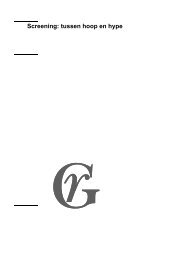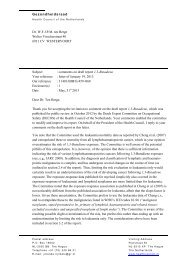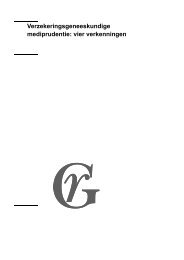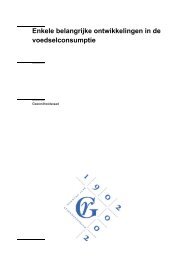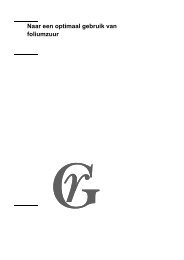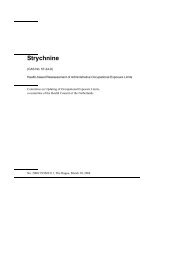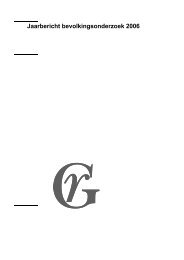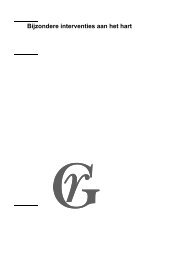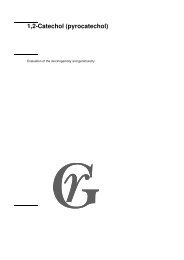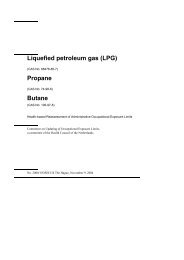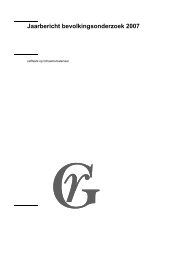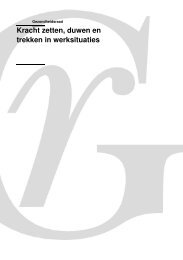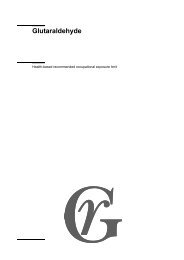Health Council of the Netherlands Reports 2003 - Gezondheidsraad
Health Council of the Netherlands Reports 2003 - Gezondheidsraad
Health Council of the Netherlands Reports 2003 - Gezondheidsraad
Create successful ePaper yourself
Turn your PDF publications into a flip-book with our unique Google optimized e-Paper software.
patients on <strong>the</strong> transplant waiting list. For almost every type <strong>of</strong> organ <strong>the</strong>re now<br />
exists a substantial waiting list. Also, for all organs <strong>the</strong> average waiting time till<br />
transplantation is on <strong>the</strong> increase. For instance, in <strong>2003</strong>, <strong>the</strong> average wait for a<br />
kidney transplant was well over 1100 days, counting from <strong>the</strong> first day <strong>of</strong> dialysis<br />
treatment (which equals registration on <strong>the</strong> waiting list). The proportion <strong>of</strong><br />
kidney patients on <strong>the</strong> waiting list being transplanted within a two-year period,<br />
has dropped since 1998 from half to less than one-third. Ano<strong>the</strong>r result <strong>of</strong> this<br />
shortage <strong>of</strong> donor organs is <strong>the</strong> substantial mortality on <strong>the</strong> waiting list, in<br />
particular among patients waiting for a heart, liver, or lung transplant.<br />
In all fairness one has to observe that, in <strong>the</strong> past twenty years, <strong>the</strong>re has been<br />
no substantial increase in <strong>the</strong> number <strong>of</strong> cadaveric kidney transplants. This<br />
number is now around 370 per year, and shows no upward trend. The main cause<br />
for this is <strong>the</strong> gradual, and – so it appears – structural decline <strong>of</strong> <strong>the</strong> number <strong>of</strong><br />
patients from whom organs could be retrieved following determination <strong>of</strong> brain<br />
death. Both <strong>the</strong> reduction <strong>of</strong> <strong>the</strong> number <strong>of</strong> fatal traffic accidents and <strong>the</strong> high<br />
incidence <strong>of</strong> family refusals to donate are responsible for this. One cannot but<br />
conclude that <strong>the</strong> actual development <strong>of</strong> cadaveric organ donation in <strong>the</strong><br />
Ne<strong>the</strong>rlands is reason for serious concern, despite recent efforts at improvement.<br />
These circumstances force one to consider alternative sources <strong>of</strong> donor<br />
organs besides <strong>the</strong> usual brain-dead cadaveric donor. The Minister <strong>of</strong> <strong>Health</strong>,<br />
Welfare and Sports in <strong>the</strong> Ne<strong>the</strong>rlands has <strong>the</strong>refore requested <strong>the</strong> Dutch <strong>Health</strong><br />
<strong>Council</strong> to report on any available alternative sources <strong>of</strong> donor organs, and to<br />
focus in particular on living donor transplants and non-heart-beating donation.<br />
This advisory report, which has been drawn up by an expert committee <strong>of</strong> <strong>the</strong><br />
<strong>Health</strong> <strong>Council</strong>, covers not only <strong>the</strong> medical state <strong>of</strong> <strong>the</strong> art, but also <strong>the</strong> ethical,<br />
legal and social aspects <strong>of</strong> organ donation.<br />
Renewed interest in living donor transplantation and NHB-donation<br />
The gradual decline in <strong>the</strong> number <strong>of</strong> cadaveric donations from heart-beating<br />
donors appears to have been partly compensated for by an increase in <strong>the</strong> number<br />
<strong>of</strong> donations from living donors and non-heart-beating donors. For <strong>the</strong> time<br />
being, this only relates to kidney transplantation. The revival <strong>of</strong> interest in <strong>the</strong><br />
Ne<strong>the</strong>rlands for <strong>the</strong>se types <strong>of</strong> donation has resulted in a situation where, in <strong>2003</strong>,<br />
over 30 percent <strong>of</strong> all cadaveric donor kidneys originated from NHB-donors. In<br />
that same year, one third <strong>of</strong> all kidney transplants in <strong>the</strong> Ne<strong>the</strong>rlands (a total <strong>of</strong><br />
560) have been performed using organs from living donors.<br />
All this justifies <strong>the</strong> conclusion that <strong>the</strong> kidney transplant program in <strong>the</strong><br />
Ne<strong>the</strong>rlands is becoming more and more dependent on <strong>the</strong>se ‘novel’ types <strong>of</strong><br />
26 <strong>Health</strong> <strong>Council</strong> <strong>of</strong> <strong>the</strong> Ne<strong>the</strong>rlands; <strong>Reports</strong> <strong>2003</strong>



